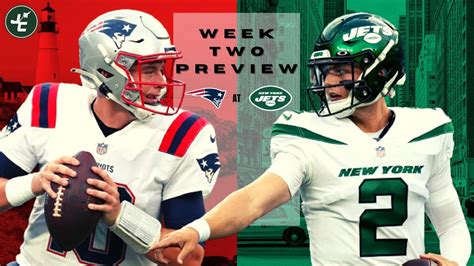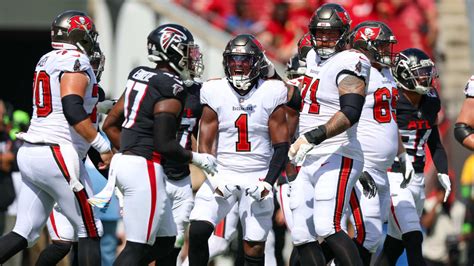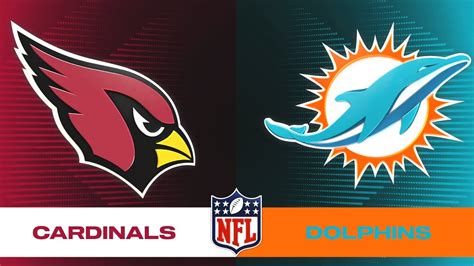Explore how media shapes fan perceptions, rivalries, player credibility, and team morale through coverage, interviews, and narratives in the Jets vs. Patriots saga.In the vibrant world of sports, few rivalries ignite passion and debate like that of the New York Jets versus the New England Patriots. Central to this ongoing saga is the pivotal role media coverage plays in shaping narratives and influencing fan perceptions. As headlines flicker and reporters dissect every clash, the stories crafted around these teams extend far beyond the field, weaving complex character arcs and pivotal moments that resonate with both die-hard supporters and casual viewers alike. This article explores how media influences rivalry dynamics, impacts player credibility, and ultimately affects team morale and fan engagement, offering a comprehensive look at the powerful interplay between sports and storytelling in this iconic matchup. Join us as we delve deeper into the intricate relationship between the media and the narrative of Jets vs. Patriots.
How Media Coverage Influences Fan Perception Of Rivalries
The rivalry between the New York Jets and the New England Patriots is one of the most storied in the NFL, but it is the media coverage that significantly shapes how fans perceive this competition. How media portrayals can amplify emotions, create narratives, and influence fan loyalty, transforming what may be a simple game into a battle laden with tension and significance.
Through the framing of narratives, sports analysts and commentators often elevate the importance of certain matchups. For example, when the Jets and Patriots are set to collide, the media may highlight historical moments, player rivalries, or coaching battles. This can lead fans to feel a heightened sense of rivalry, turning a regular-season game into a must-watch event.
Furthermore, social media has revolutionized how fans engage with these narratives. Platforms like Twitter and Instagram allow fans to see real-time reactions to media coverage. Memes, commentary, and highlights spread rapidly, shaping opinions and stirring discussions. This dynamic means that fan perception is constantly influenced by the latest media stories, often before they even set foot in the stadium.
Additionally, the emphasis placed on particular players’ performances affects how fans view the rivalry. For instance, if a Jets player is portrayed as a “Patriots killer” by the media, expectations for his performance will be significantly heightened. Fans may come to view every game against New England as a pivotal moment for that player, further complicating the emotional landscape of the rivalry.
The media’s role in influencing fan perception of rivalries underscores the profound impact that coverage has on sports culture. By continually curating and crafting narratives surrounding high-stakes rivalries like the Jets vs. Patriots, the media shapes not only how fans engage with the rivalry but also how they identify with their teams and fellow supporters.
Developing Storylines: Media’s Role In Shaping Game Anticipation
The relationship between how media covers sports and the anticipation surrounding major matchups is undeniable, especially in high-stakes rivalries like that of the New York Jets and New England Patriots. The media not only reports on these games but actively engages in crafting narratives that can enhance fan excitement and shape public perception.
Through various mediums—television broadcasts, online articles, podcasts, and social media—the coverage preceding a game plays a crucial role in building a storyline. This can involve emphasizing player matchups, coaching strategies, and historical context, all of which contribute to the overall hype.
For example, sensational headlines, expert analyses, and player interviews can highlight key players’ rivalries and personal stories that make the game more compelling. These narratives can evoke emotional responses from fans, increasing their investment in the game long before the kickoff.
A closer look at how media makes telling this story more impactful reveals several strategies:
| Method | Description |
|---|---|
| Player Profiles | In-depth coverage of individual players’ backgrounds, strengths, and weaknesses helps fans connect on a personal level. |
| Historical Context | Projecting past matchups, records, and playoff implications gives fans a sense of stakes involved. |
| Fan Interaction | Engaging fans through polls, social media discussions, and live chats helps to create a community around the game. |
| Expert Predictions | Analyst predictions can sway public opinion and generate discussion, which further adds to the anticipation. |
The role of media in shaping the narrative of an upcoming New York Jets versus New England Patriots game exemplifies the power how media can influence not just viewership but also the emotional investment of fans. This orchestrated buildup is more than just simple anticipation; it’s a key element in enriching the experience of a rivalry that has captivated fans for years.
How Media Interviews Impact Player Credibility And Public Perception
In the world of sports, how media interviews influence player credibility and public perception cannot be underestimated. Media coverage, particularly through interviews, serves as a primary channel through which fans and analysts gauge a player’s character, professionalism, and commitment to the game. This dynamic becomes even more pronounced in high-stakes rivalries such as the New York Jets vs. New England Patriots.
When players face the media, their responses can either fortify or undermine their credibility. A well-articulated interview that showcases a player’s insights on gameplay, team dynamics, and rivalries can resonate positively with fans, reinforcing their standing as reliable and trustworthy figures in the sport. Conversely, defensive or controversial statements can lead to negative media portrayals and a decline in public perception.
The impact of media interviews extends beyond individual reputations; they help form overarching narratives that shape the entire team’s image. For example, if a prominent Jets player delivers an eloquent handle on the emotional weight of facing the Patriots, it not only boosts his credibility but can elevate the Jets’ standing in public discourse. This, in effect, can galvanize fan support and enhance team morale, especially in the context of a fierce rivalry.
Furthermore, the nature of questions asked can influence the narrative significantly. Interviews that focus on strategic insights, personal experiences, or emotional attachments often elicit responses that fans find relatable and engaging. This fosters a sense of connection between players and their supporters, building a loyal following over time. On the other hand, if the media fixates on scandals or controversies, it could challenge a player’s credibility and alter how fans perceive the franchise as a whole.
how media interviews are conducted and received plays a crucial role in shaping player credibility and public perception. Their impact on individual athletes and the larger narrative surrounding franchises like the Jets and Patriots underscores the importance of thoughtful communication in the sporting arena.
Analyzing The Result: Media Narratives After Jets Vs Patriots Games
After every matchup between the New York Jets and the New England Patriots, the media plays a crucial role in framing the narrative surrounding the game’s outcome. These narratives can significantly affect public perception and influence conversations among fans and analysts alike.
How media outlets analyze game results often varies, reflecting the prevailing sentiments about each team. For instance, following a Jets victory, media coverage may spotlight the Jets’ strategic prowess, highlighting key plays or player performances that contributed to the unexpected success. Conversely, a Patriots win might lead to narratives that reinforce their dominance in the rivalry, often focusing on the tactical genius of their coaches or the resilience of star players.
This post-game analysis doesn’t only influence perceptions of the teams involved but can also impact the overall landscape of the NFL. Fans tuning in to post-game shows and articles become recipients of these narratives, which shape their opinions about the teams and the rivalry. A sensational article might prompt discussions on social media, further accentuating the narrative that the media has painted.
Moreover, the way outcomes are reported can lead to different emotional reactions from the fans. Celebratory headlines after a Jets win can boost team morale and fan engagement, while critical analyses of a Patriots loss can prompt a defensive reaction from devoted fans. These narratives have a ripple effect, creating passionate debates among fans that can last well beyond the final whistle.
The media’s portrayal of these games serves not just as a recounting of events but as a lens through which fans and analysts understand the historical significance and ongoing dynamics of the Jets vs. Patriots rivalry. This illustrates the powerful impact of how media coverage frames and shapes narratives during one of the most intense rivalries in sports.
How Media Highlights Affect Team Morale And Fan Engagement
Media highlights play a pivotal role in shaping the overall perception of teams, particularly in high-stakes rivalries like the Jets vs. Patriots. When media outlets broadcast exciting plays, pivotal game moments, and standout performances, they create a narrative that resonates with both fans and players. This content not only engages loyal supporters but also draws in casual viewers who may become invested in the teams’ stories.
For players, seeing their efforts celebrated in highlight reels can significantly boost morale. The recognition fuels their motivation and can translate into improved performance in future games. When players feel valued and appreciated publicly, it contributes to a positive team environment—a crucial aspect of any successful sporting unit.
Additionally, media highlights serve as a means of bonding for fans. Shareable clips on social media platforms enhance fan engagement by enabling them to relive the excitement and share their emotions about the game with their peers. This can lead to increased attendance at games and more active participation in fan communities, both online and offline.
Moreover, the portrayal of crucial moments can influence the fan narrative. A well-timed highlight can shift public perceptions and create discussions that further the rivalry dynamic. Fans often rally around these highlights, discussing plays long after the final whistle, fostering a sense of community among supporters.
In essence, how media highlights are presented can make a significant impact on team morale and the engagement of their fan base. The ripple effect starts from the players who are inspired by the recognition and can transform into widespread community support, all stemming from those pivotal moments that the media chooses to showcase.
Frequently Asked Questions
How does media coverage influence public perception of the Jets vs. Patriots rivalry?
Media coverage often amplifies narratives that can influence how fans and analysts perceive the rivalry, portraying it in a way that adds drama and excitement, which in turn affects how audiences engage with the teams.
What role do social media platforms play in shaping the narrative surrounding this rivalry?
Social media platforms allow fans, players, and analysts to share real-time opinions and reactions, creating a dynamic narrative that evolves quickly and can significantly shape public sentiment based on trending moments.
How has the historical context of the Jets vs. Patriots impacted current media coverage?
The historical context, including pivotal games and notable player interactions, provides a rich backdrop for media coverage, allowing journalists to draw on past events to enhance storytelling and engage current audiences.
What are some common themes highlighted by media during Jets vs. Patriots games?
Common themes include underdog narratives, significant player rivalries, strategic matchups between coaches, and the implications of these games on playoff contexts, all of which are emphasized to capture viewer interest.
How do biases in media reporting affect fan expectations before a game?
Media biases can lead to exaggerated expectations, often portraying one team as favored over the other or focusing excessively on certain players, which can skew fans’ perceptions and create heightened anticipation.
What impact does media speculation about player performance have on the rivalry?
Media speculation about player performance can heighten tensions and create storylines leading into the game, influencing not just fan expectations but also the players’ mental preparedness and motivation.
In what ways can media coverage serve to unify or divide fans in this rivalry?
Media coverage can unify fans by highlighting shared team experiences and creating collective narratives, but it can also divide fans by emphasizing rivalries, contentious moments, and criticisms that fuel competition between fan bases.






